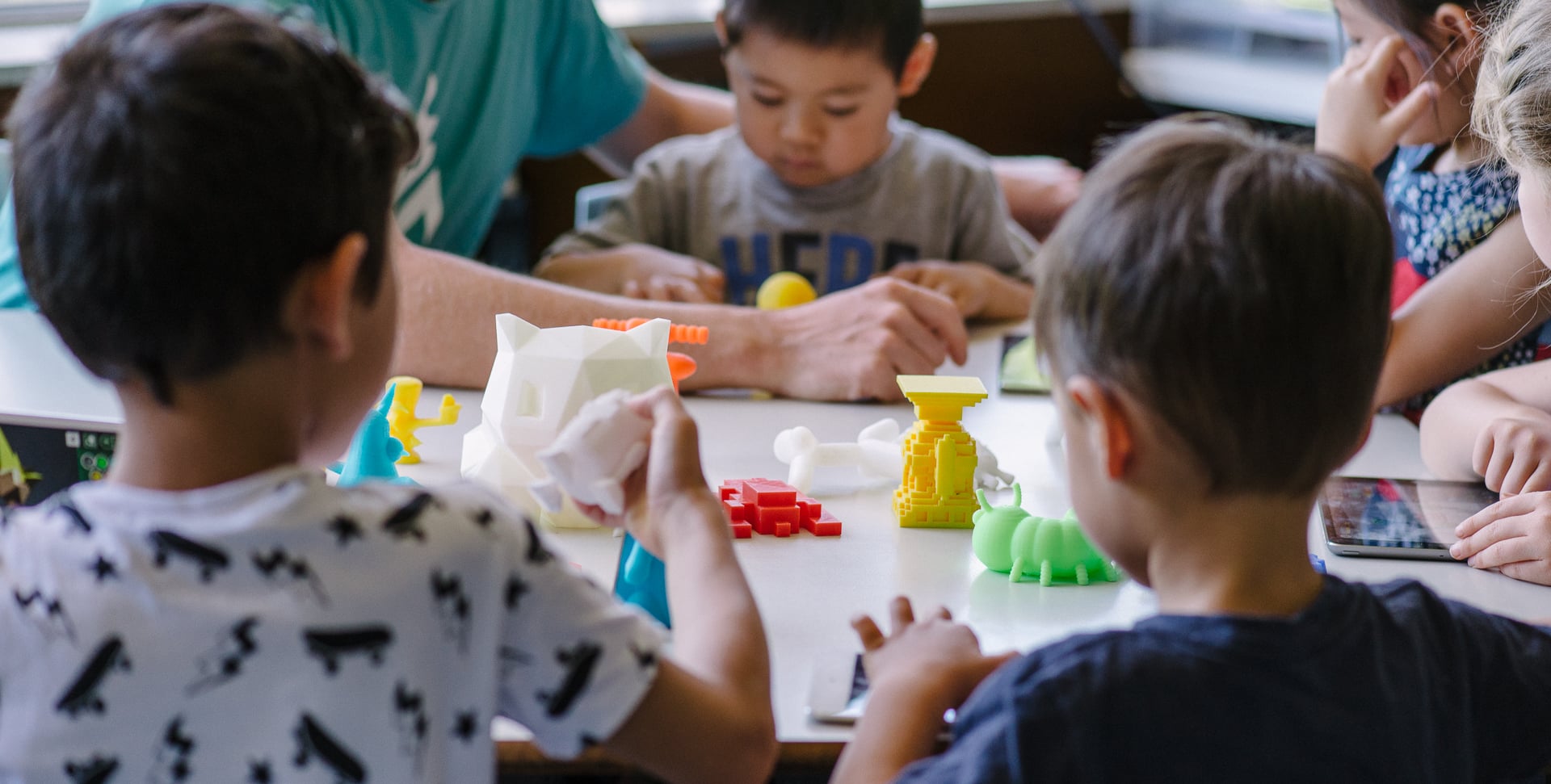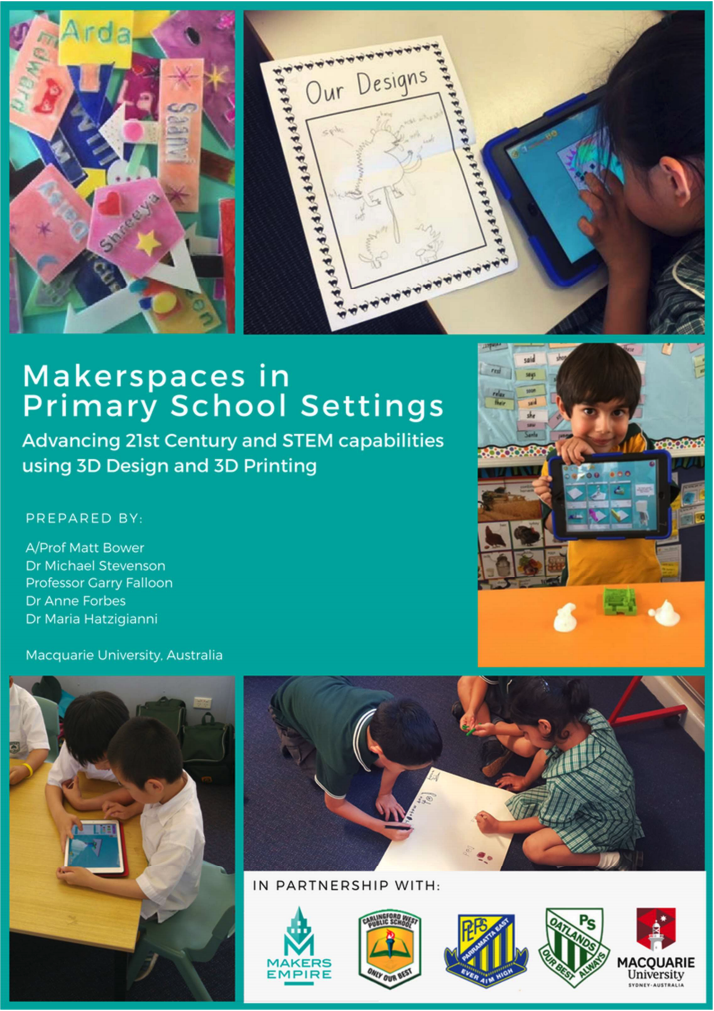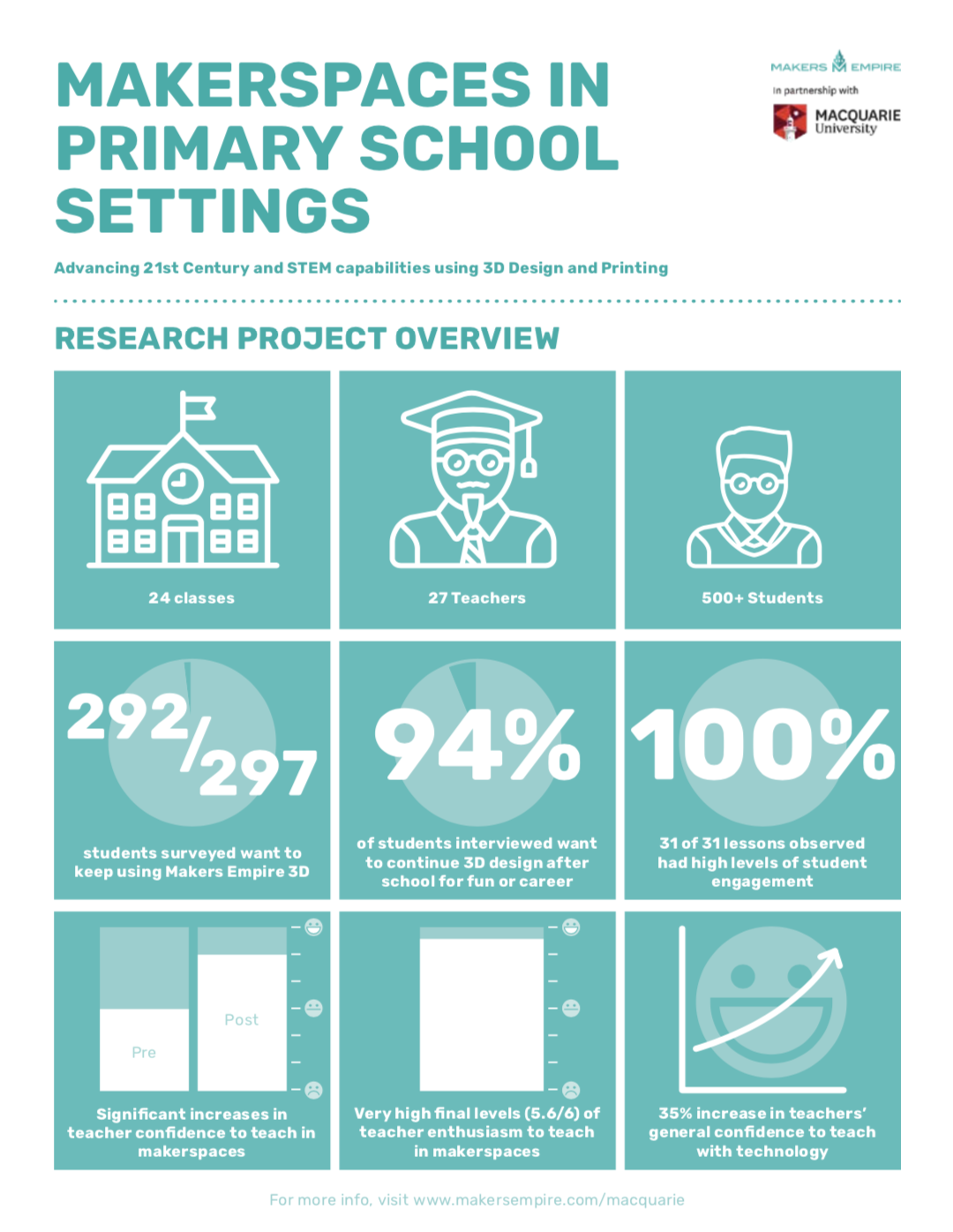
Makerspaces in Primary Schools Research Study | Macquarie University | Evidence-Based Learning
Makerspaces have been widely advocated as a way to develop STEM abilities and soft skills. However, until now, there has been little research that investigates the learning and teaching outcomes possible with makerspaces, particularly for younger students.
Now a new Australian university research study on makerspaces in primary school settings reveals the compelling evidence of benefits of this type of learning for primary educators.
From August 2017 to July 2018, Macquarie University’s Department of Educational Studies partnered with the New South Wales Department of Education, Carlingford West Public School, Parramatta East Public School, Oatlands Public School and Makers Empire for a research project on maker pedagogy in primary schools.
The research study examined how maker activities using 3D design and 3D printing technology could enhance learning and teaching outcomes: teachers from the participating schools undertook Makers Empire’s Learning by Design professional development course and participating students used Makers Empire’s 3D modelling software.
The recently published research study report revealed that makerspaces can be highly effective at developing children’s creativity, critical thinking, design thinking and digital skills.
Students were highly engaged with the 3D technology, and the idea of solving genuine design challenges – it helped boost their confidence and resilience when dealing with setbacks, particularly for those less capable students.
In a different way, the research study showed that teachers became more comfortable with technology, and more collaborative and flexible in their teaching. All of the 24 classroom teachers who participated in the focus group expressed a desire to integrate 3D design-based makerspaces into their future classes.
The final 282-page research study report was authored by researchers from the Department of Educational Studies at Macquarie University — Associate Professor Matt Bower, Dr Michael Stevenson, Professor Garry Falloon, Dr Anne Forbes and Dr Maria Hatzigianni — and published in September 2018.
The Six Research Questions
1. What do students learn when undertaking maker activities?
2. How do maker activities using 3D technology impact on students’ design thinking skills?
3. What supports and constrains learning in maker activities?
4. How do maker activities using 3D technology influence student motivation, engagement, self-efficacy and future intentions?
5. How can teacher capacity to embed design thinking processes through maker-based pedagogies be developed through a blended professional learning program?
6. How can teachers be best supported to develop their maker pedagogical capabilities?
Key Report Findings
IMPACT ON STUDENTS AND LEARNING
High Student Engagement
- “Maker activities using 3D technology resulted in very high levels of student engagement, as well as increased levels of student confidence (particularly for less capable students).” [page 4]
- “There was very strong student demand to complete further lessons involving 3D design and printing, with many students expressing a desire to undertake 3D design activities outside school and in their future careers. [page 4]
- “Many of the students interviewed were highly positive in their reviews of the Makers Empire 3D app, with ratings such as “100%” or “11 out of ten”.” [page 9]
- “Eight students (23.5%) chose to voluntarily use the app at home for fun, often with members of their family.” [page 9]
Student Transformation
- “Maker activities using 3D technology resulted in… marked increases to some students’ confidence –, particularly those less capable students.” [page 13]
- “There were also repeated stories of student transformation, for instance, where one of Kindergarten teacher Julia’s previously reluctant writers had later become “a shining star”.” [page 8]
The Desire to Continue Using 3D Technology
- “All students indicated a desire to keep using 3D design and printing in future lessons.” [page 4]
- “There were 32 students (94.1%) who wanted to use 3D design and printing once they left school, for instance as a career (“build houses so like… maybe people living in the street can have houses for them to get and live in”) or for fun (“like a toy, because I [already] made a toy ball for my dog”).” [page 9-10]
- “An informal survey of students at one of the participating schools revealed that 292 of 297 students (97%) would like to complete another unit of work involving 3D design using the Makers Empire 3D app.” [page 7]
Impact on Students’ Design Thinking Skills
- “When undertaking makerspace-based activities, students were observed to develop creativity, problem-solving skills, critical thinking, inquiry capabilities, design thinking skills, collaborative skills, autonomy, literacy, numeracy, scientific understanding, technological capabilities, communication skills, reflective learning capabilities and resilience.” [page 12]
- “Maker activities using 3D technologies resulted in students demonstrating extensive design thinking skills in discovery, interpretation, ideation, as well as varying degrees of competence with experimentation and evolution.” [page 12]
IMPACT ON TEACHERS AND TEACHING
Increased Confidence in Teaching
- “Teachers indicated that the well-structured, pedagogically grounded, hands-on and situated professional learning enabled them to develop a better understanding of makerspaces, how to teach in them, the technical skills required, and 21st-century capabilities. The professional learning also significantly increased their confidence to teach in makerspaces.” [page 4].
Requirement of Resources
- “Teachers felt that the professional learning was important because it helped to improve their understanding of what makerspaces were, how to teach in them, the sorts of technical skills they would need, at the same time as it advanced their 21st Century and design thinking capabilities more generally.” [page 3]
- “Teachers appreciated the hands-on and experiential nature of the professional learning program, the technical skills that were covered, and the time that it gave them to collaboratively plan with peers.” [page 4]
- “For teachers to effectively develop their maker pedagogical capabilities, they need to be provided with access to reliable technology, collegial support, teaching resources, appropriate makerspaces, and time to develop their capabilities and lessons. In addition, they are best supported by a school culture that encourages exploration and experimentation.” [page 13]
- One teacher felt that the Makers Empire platform was essential for supporting design thinking in her unit of work, commenting that refining designs “is a skill that they may not have had [achieved] without the support of the app.”” [page 8]
Teacher Transformation
- “An unanticipated outcome of the study was the extensive teacher transformation that took place. Several teachers indicated that they had shifted to be more collaborative, flexible, and comfortable with technology. Many teachers entered learning partnerships with students, and as a result, students came to see their teachers as models of life-long learning. Some teachers related how these changes had transcended beyond their makerspaces modules – for instance, in the form of more inquiry-based, problem-based, and collaborative units of work.” [page 4].
- “Several teachers also pointed out that they appreciated how the makerspaces project enabled them to implement an integrated curriculum,” [page 8]
Comments by Teachers
Let Them Figure It Out
- “…just give them time – and that’s how we did… The first lesson in my class, I just let them go for it instead of being very explicit like I normally am. And it was incredible to see what they could figure out just by playing around with the app and then share with their peers, rather than me keeping them all together, and we’re going to go through it one step at a time.” [page 192-193]
Improved Resilience
- “A lot of them, their resilience [improved]. The kids that would just sort of give up learnt a lot more about persevering with it, and to keep trying, which was good. And the main thing that I loved was that they sort of found problems with their designs and they weren’t really intimidated by that anymore.” [page 196]
Students Helped Each other
- “I saw a lot of my guys [students], normally I have a few quieter ones, they would just sit to themselves, and be on an iPad or whatever. But because they were so good at it, they were willing to get up and help others.” [page 196]
Future Focus
- “I think my students have been able to explore what it is like to learn in a future focused setting…they’re able to investigate real world problems independently and explore their critical thinking skills and designing skills.” [page 177]
Teaching Across The Curriculum
- “I really liked how it allowed me to look at learning as a whole, right, not ‘this is English, this is Maths’… Really, I could think about in what ways I could make it more meaningful. I could change it and relate it to all the Key Learning Areas.” [page 8]
Learning with the Children
- “One of the good things was, we were all learning with the children and along the way we communicated that with them. At one point, I was actually in a classroom last week and I couldn’t get the shape to sit flat… And I tried and tried and tried, and the child was getting frustrated. She could see that I was finding it challenging as well, which is really good for them to see that. And I said, why don’t you go into [the other teacher’s] room because I know that she is really good at attaching the shapes together. And to see that I had asked for help from another teacher, I think was really powerful for the child to see that.” [page 205]
On Makerspaces
- “Makerspaces is [sic] bringing the best pedagogies together, delivering the ultimate teaching and learning experiences for students and teachers. It [is about] problem solving, thinking critically and creatively and integrating across all KLAs. It’s empowering students to propose solutions, try and refine without the fear of failure. It’s the best example I have seen of collaboration between students (and teachers!) It really is bringing learning to life.” [page 175]
On Makers Empire
- “I think one of the best things about Makers Empire is that they’re obviously very considerate… They’ve already got a lot of ideas for programmes and ways you could integrate that into your units and things like that… teachers today are time poor and there’s always another thing added to the top of the pile but if you can say, you don’t need to reinvent the wheel here, but look at what you could put into this existing unit that you have and look what’s already here so you’re not having to start from scratch.” [page 207]
Official Primary Makers Website

Visit the Primary Makers website set up by Macquarie University for further details about the report, the authors, other publications and contact details.




